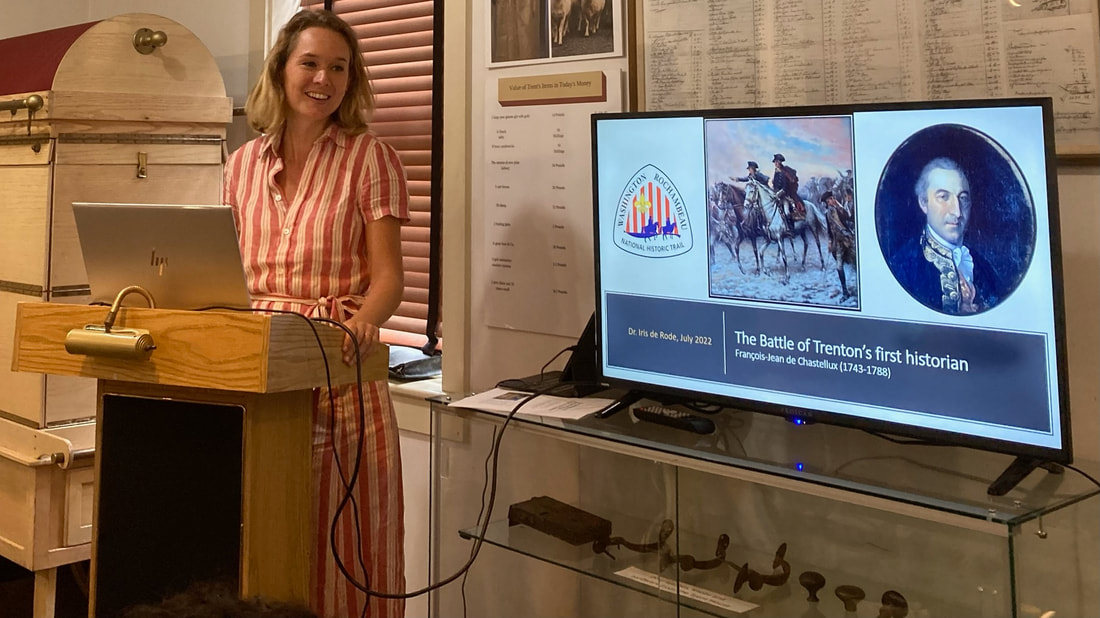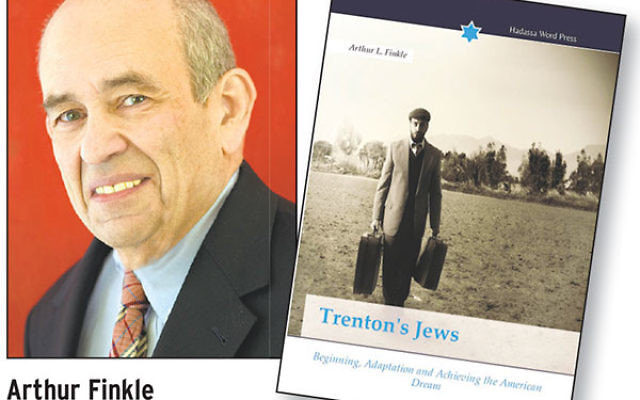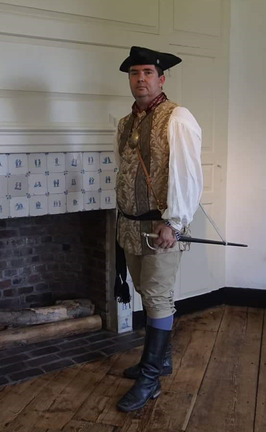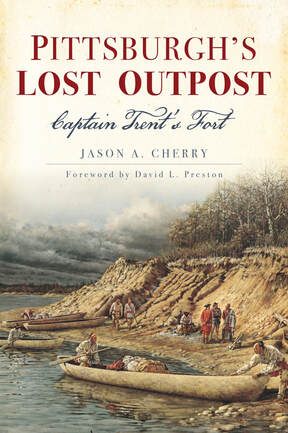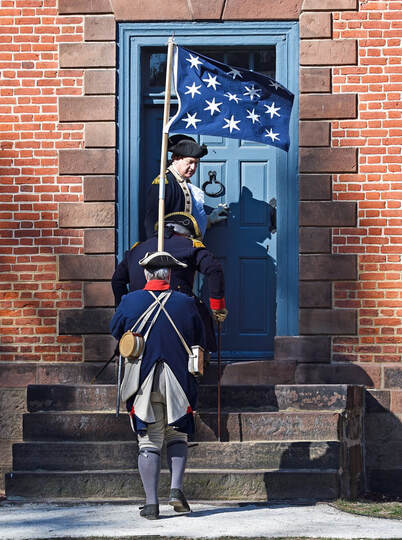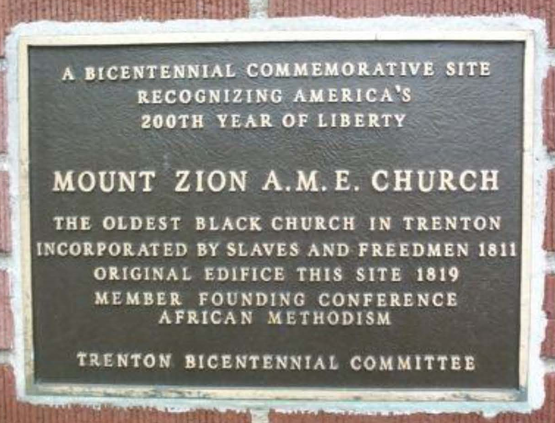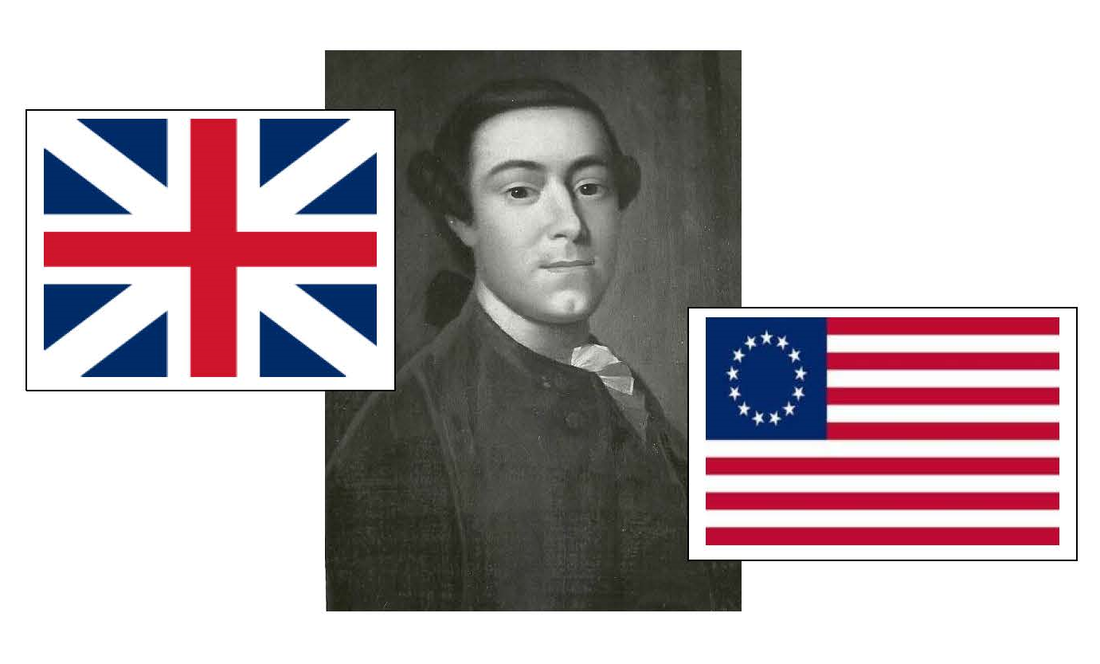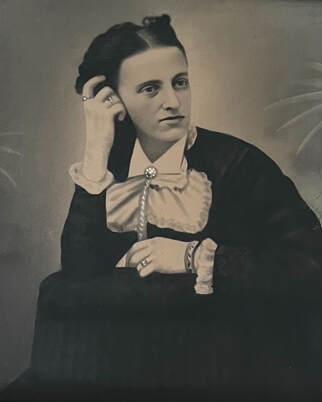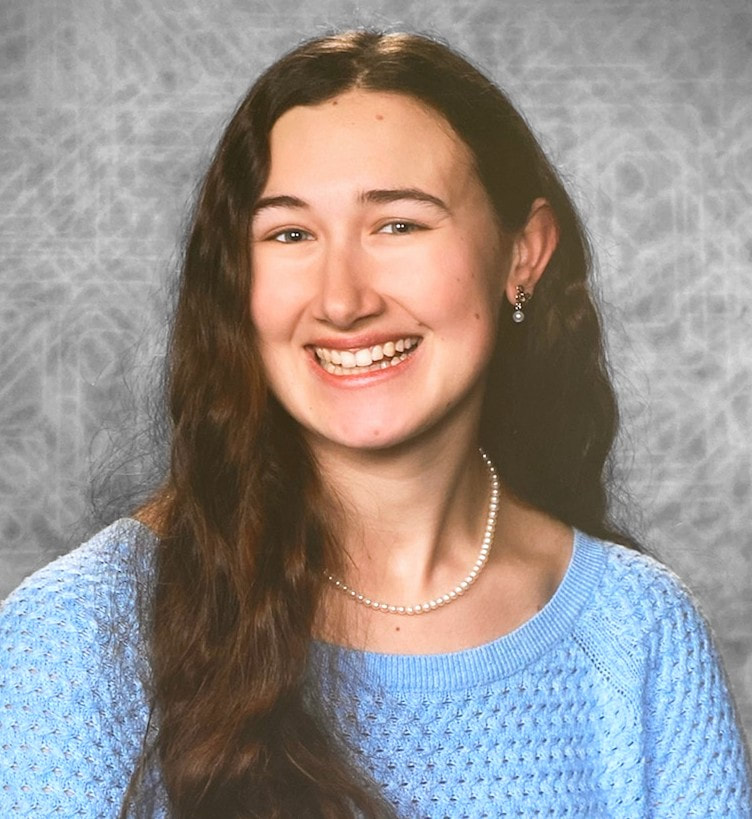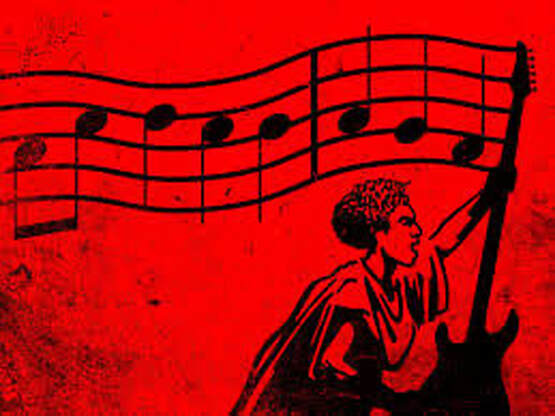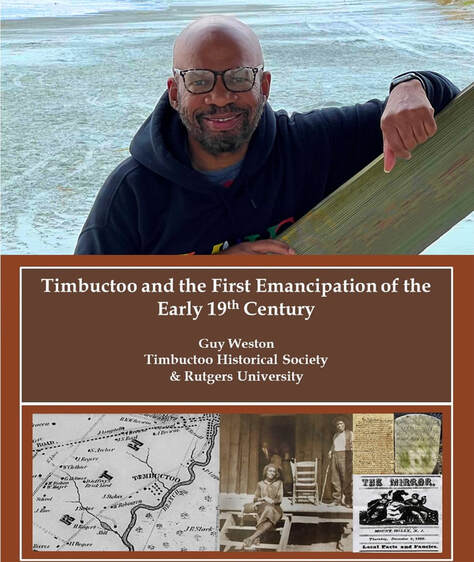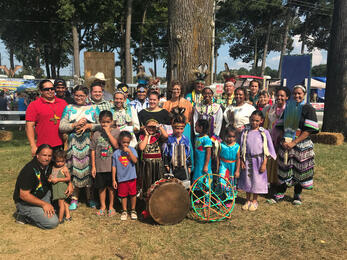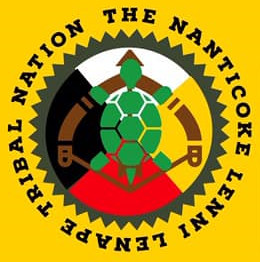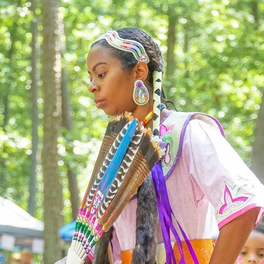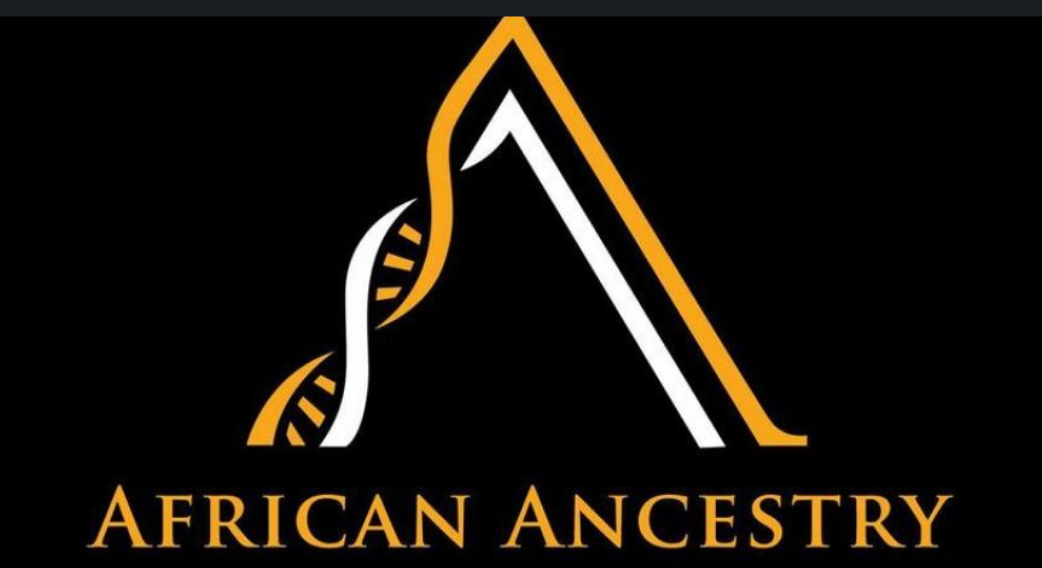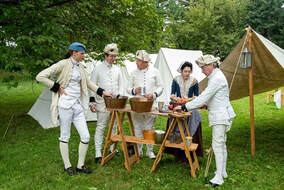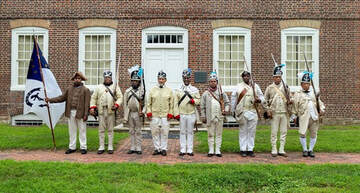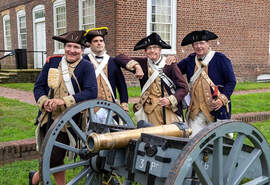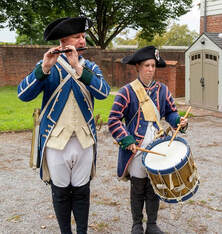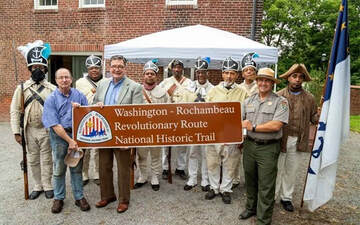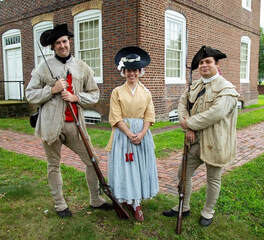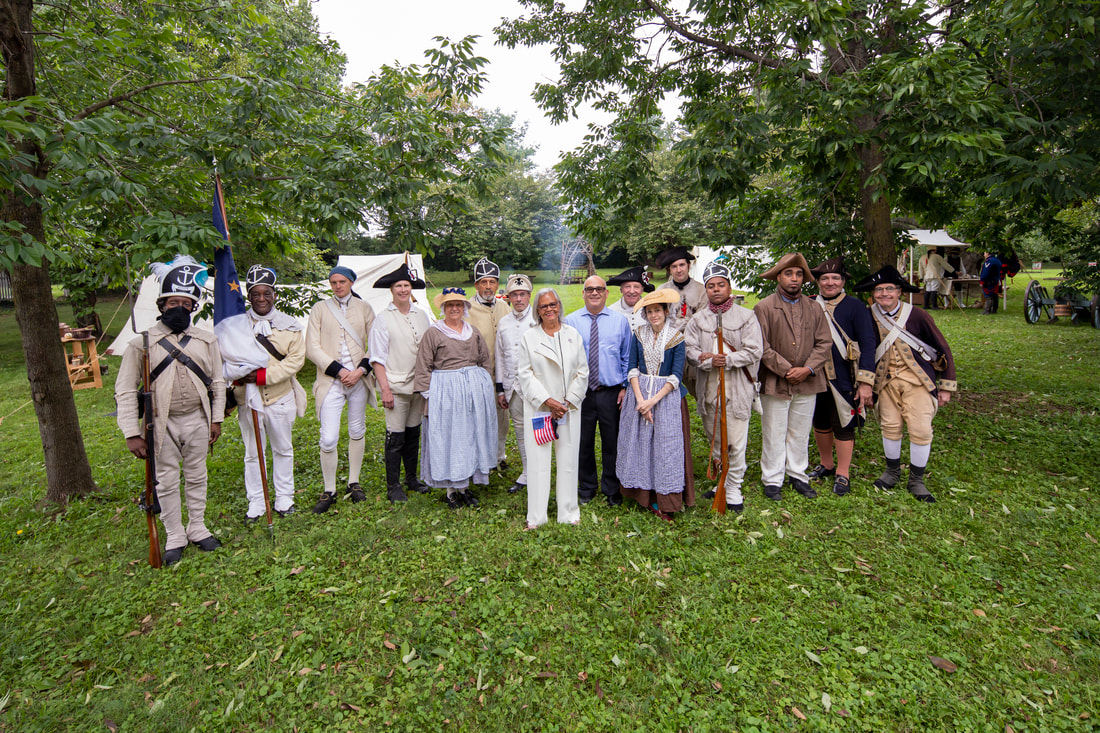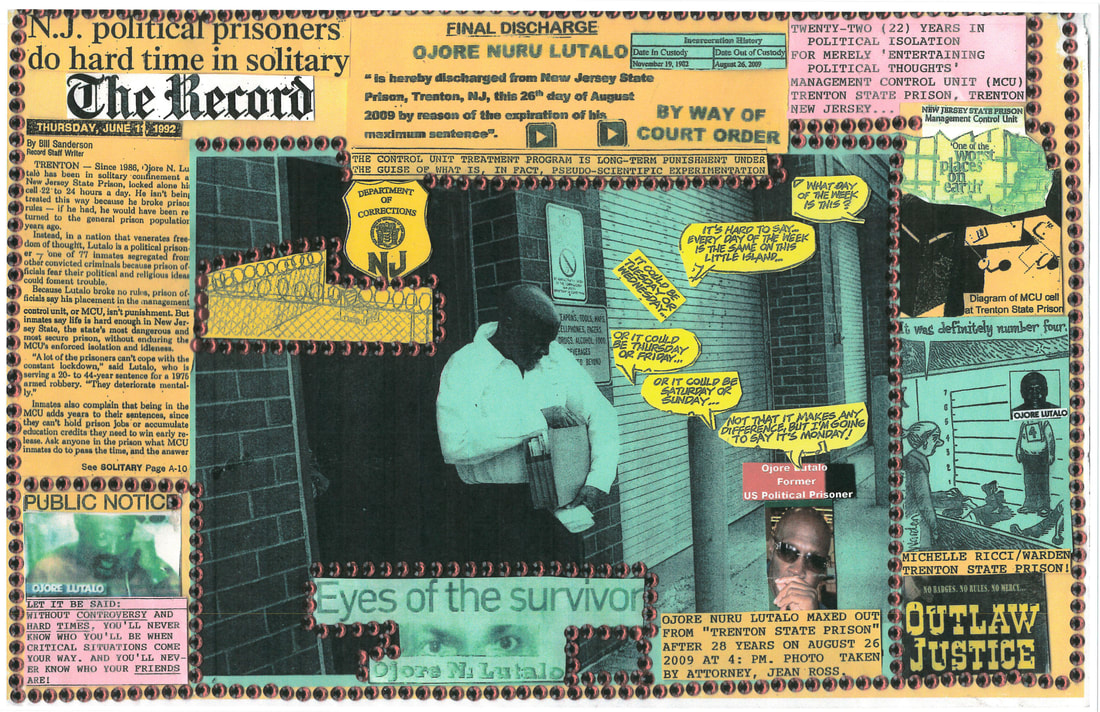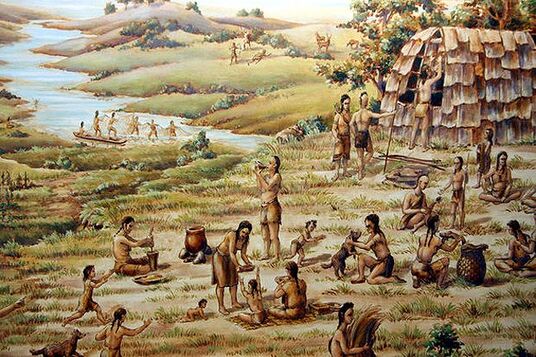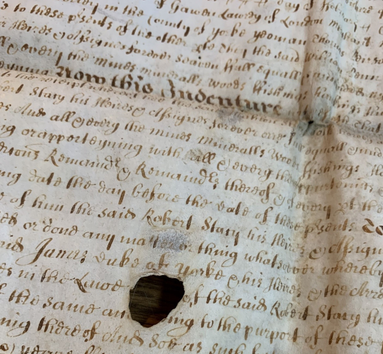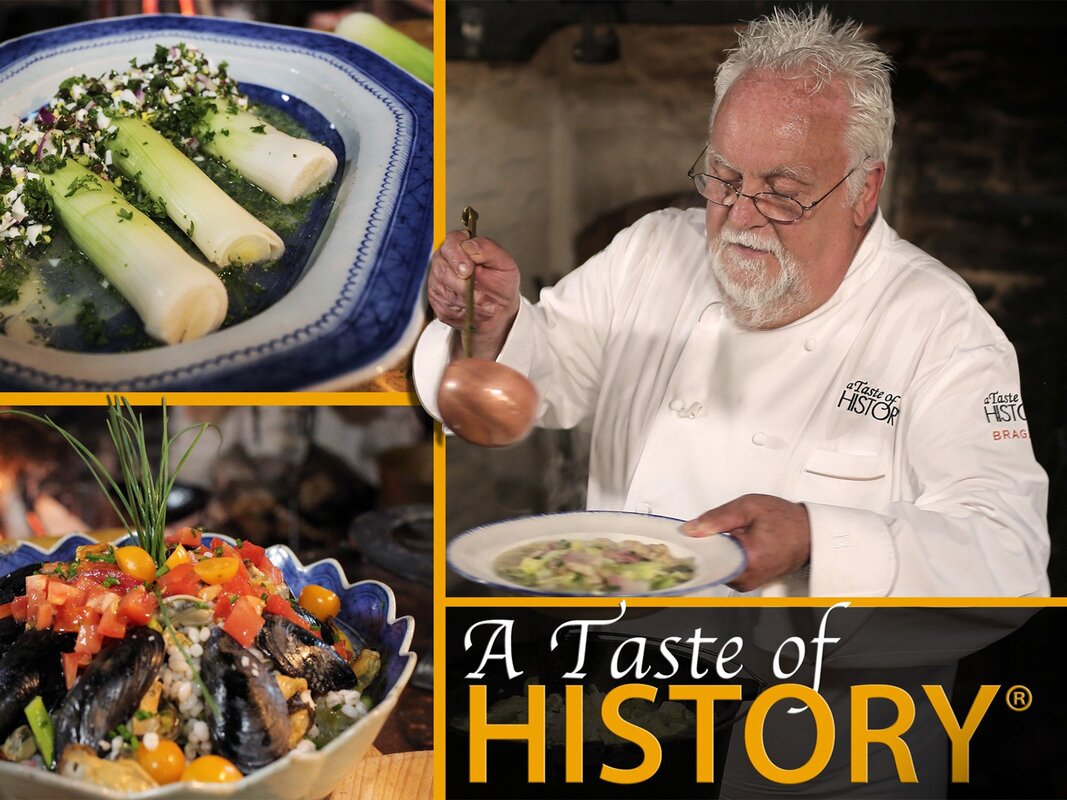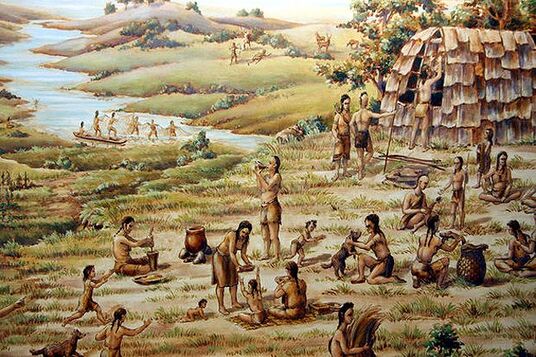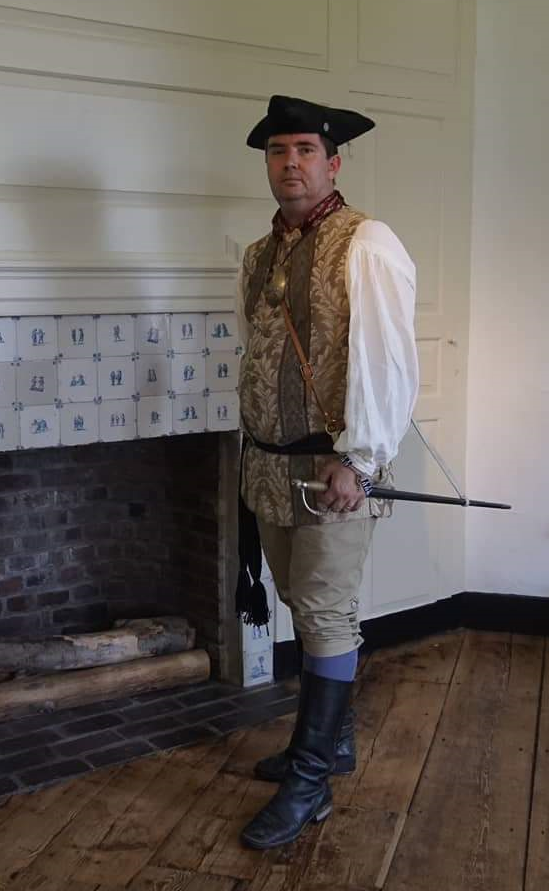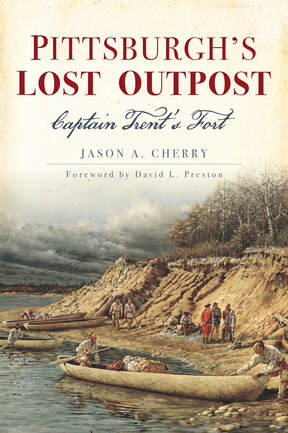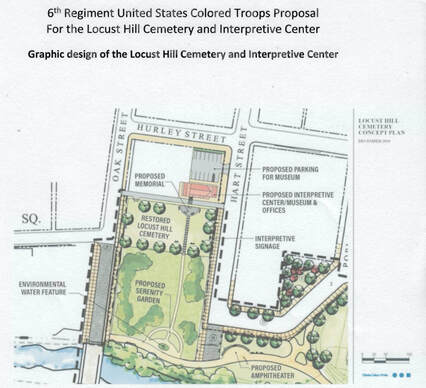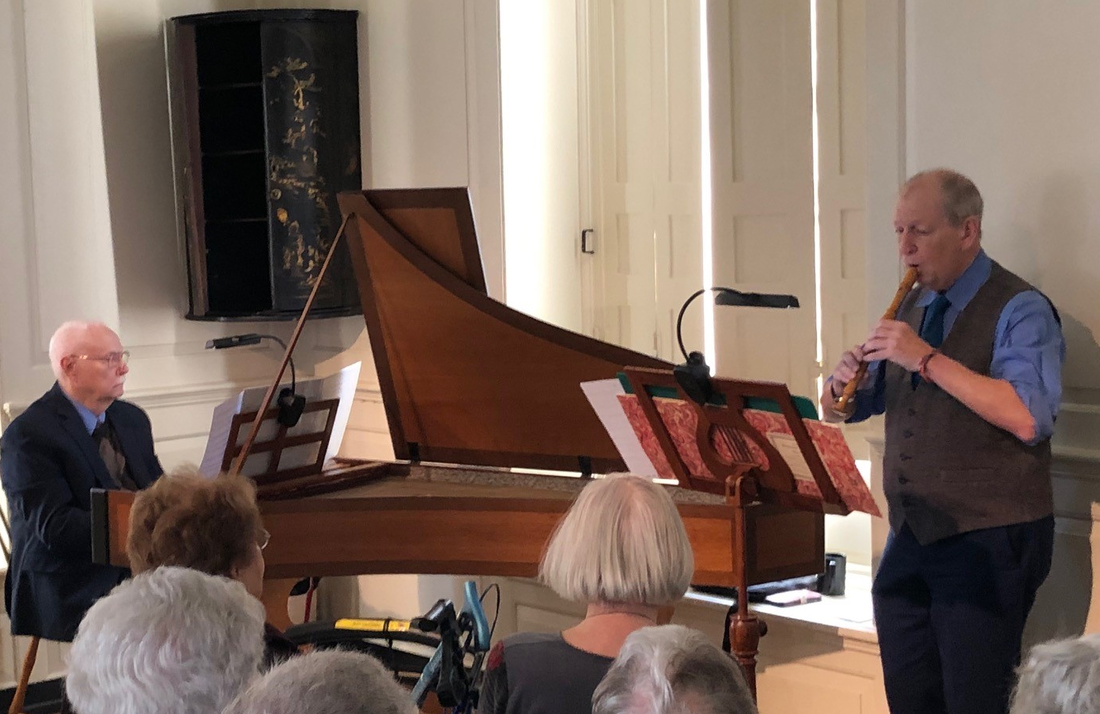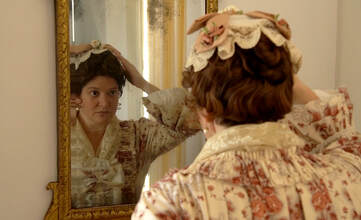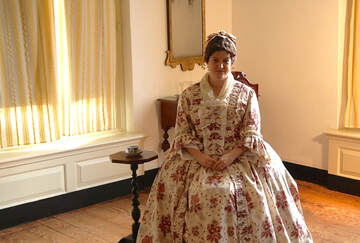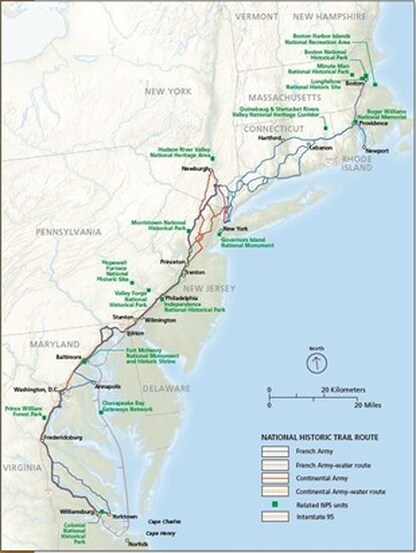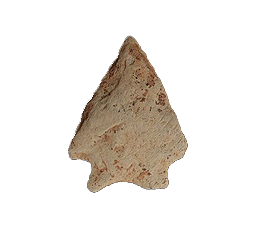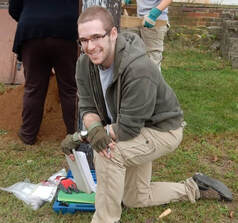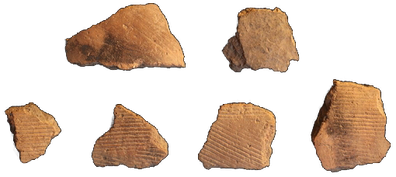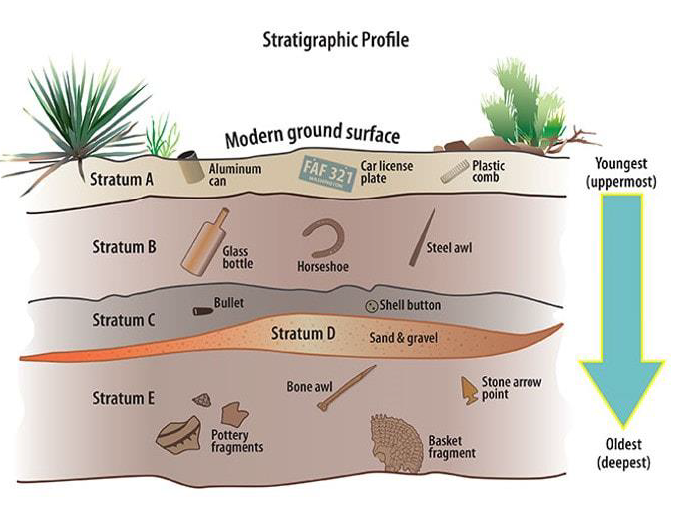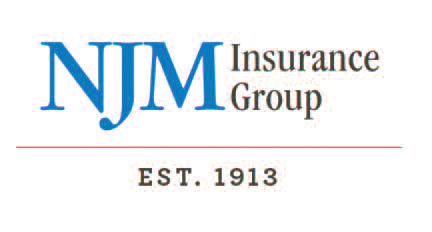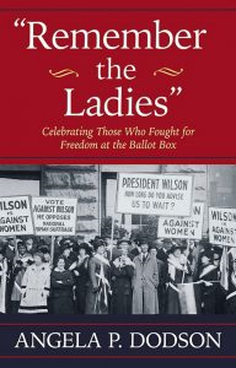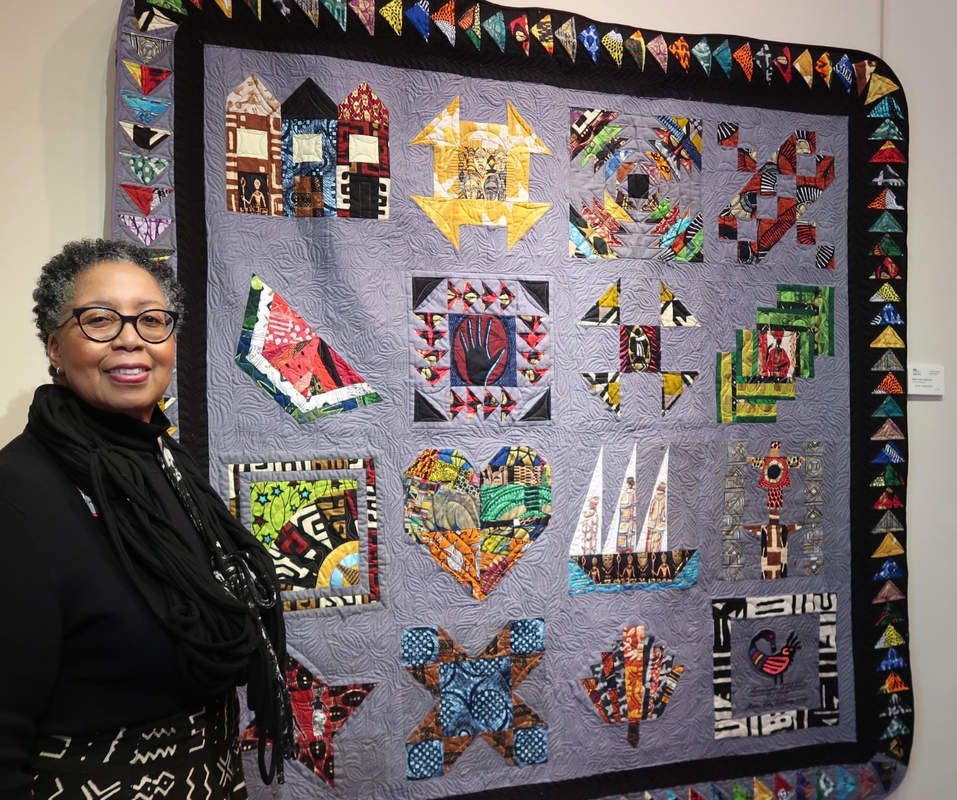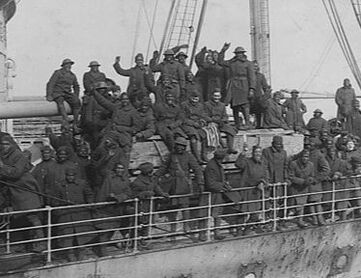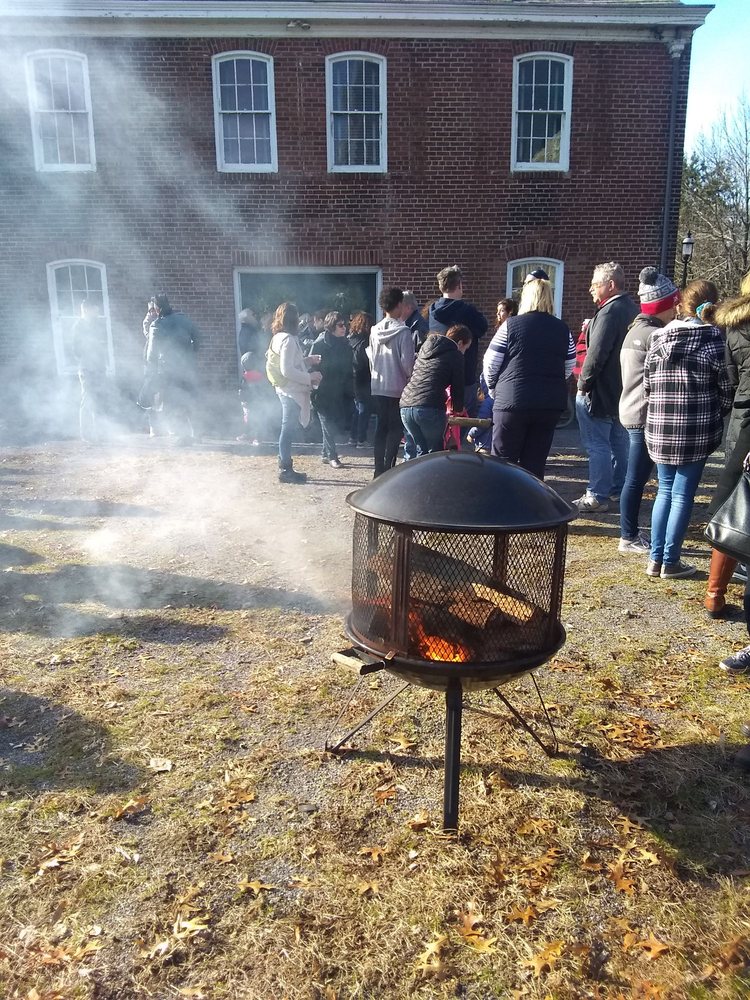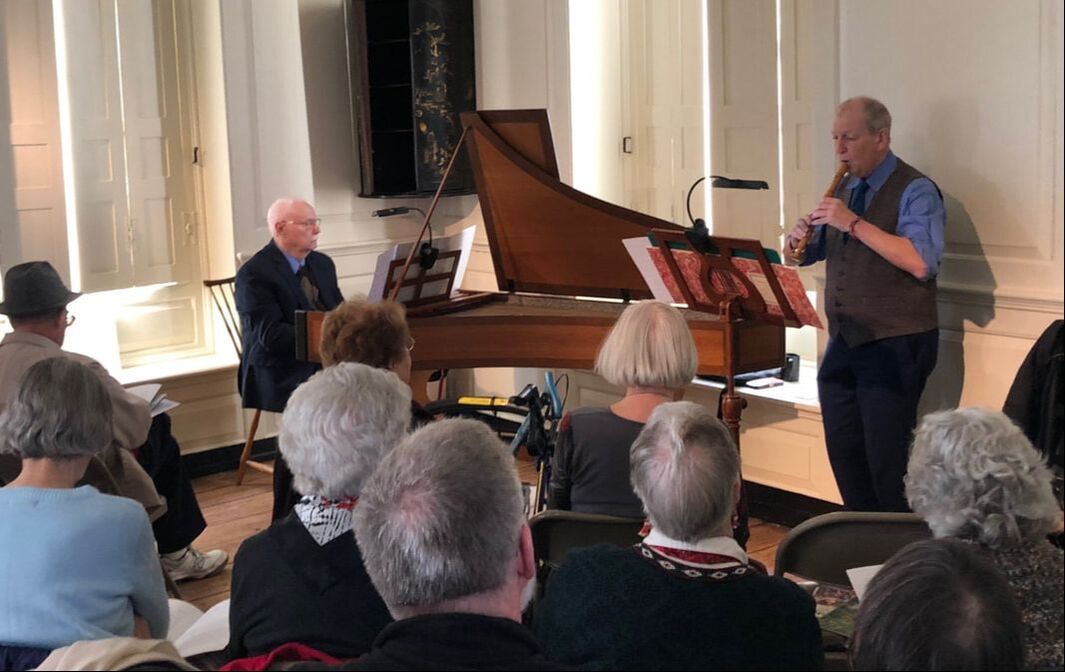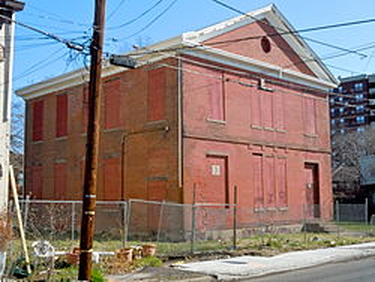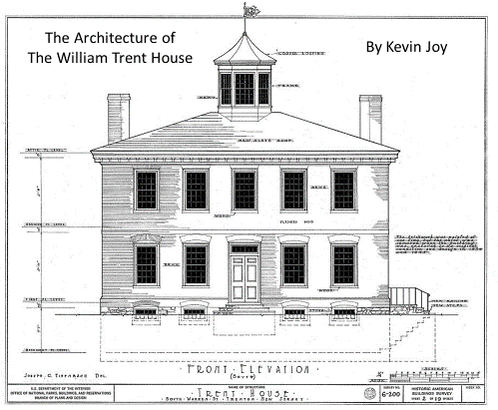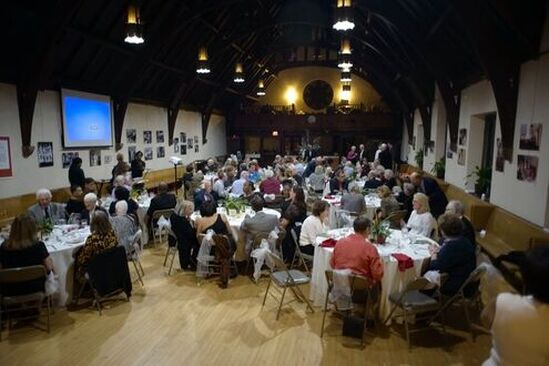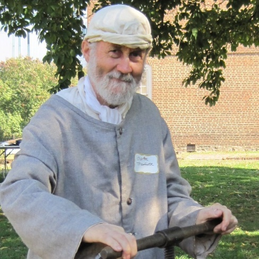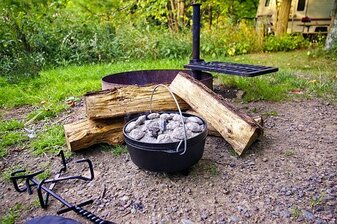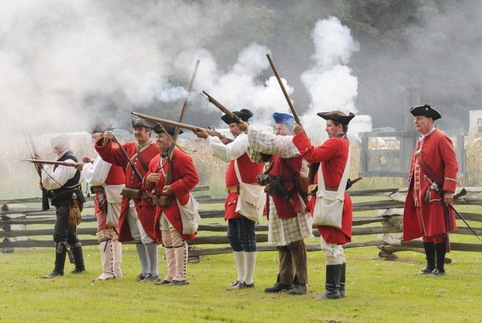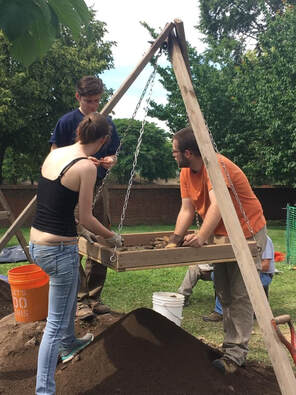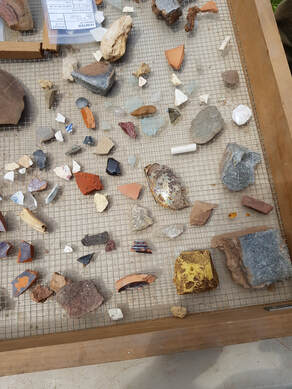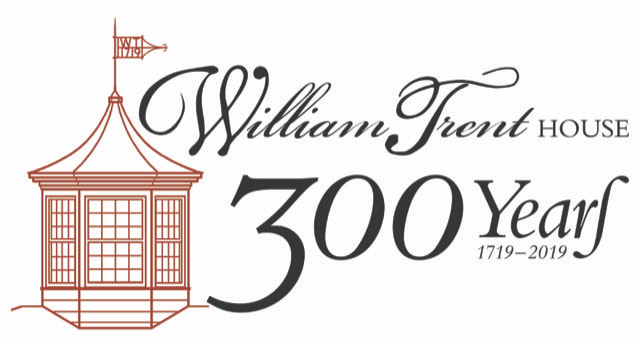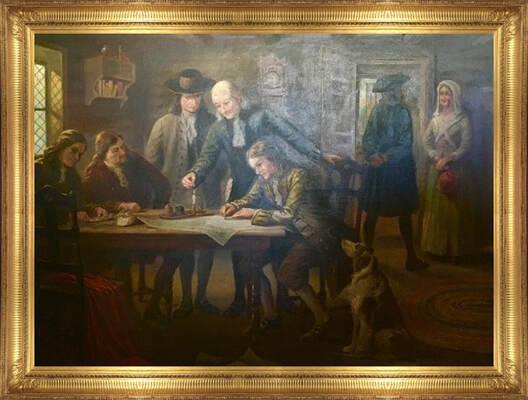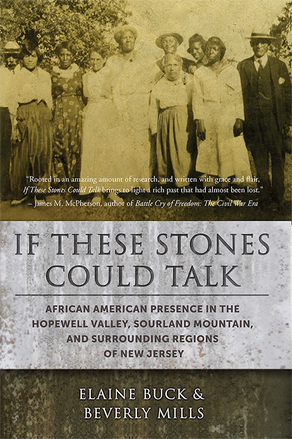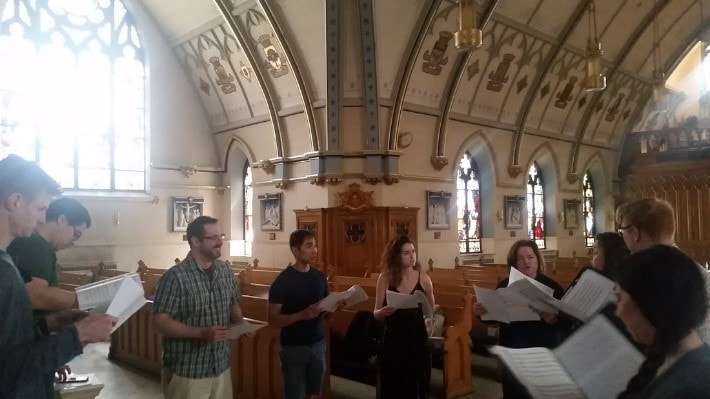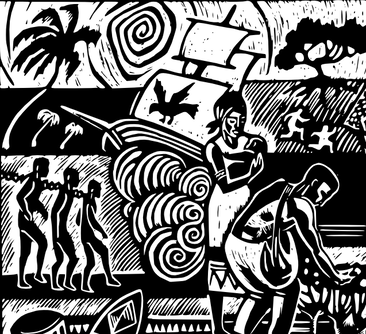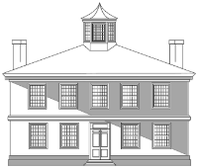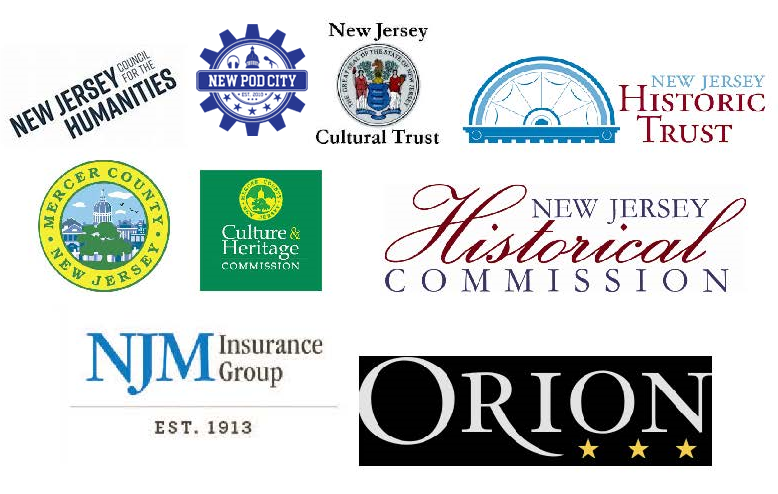Past Events
The Trent House hosts lectures on a wide range of historical topics, community and family programs, and special events. Featured are events and programs held in 2019 on.
The First Historian of the Battle of Trenton: Francois-Jean de Chastellux, 1734-1788
Saturday, July 9, 2022 - 2 pm
In-person at the 1719 William Trent House Museum & via Zoom
Saturday, July 9, 2022 - 2 pm
In-person at the 1719 William Trent House Museum & via Zoom
|
During the last phase of the American Revolution, the French expeditionary army of the Count de Rochambeau came to the aid of George Washington's forces in 1780. To conduct war in these new, unknown lands, a group of French officers went on a mission to do extensive studies of the American lands and the former battlefields of the American Revolution. François-Jean de Chastellux, the Major General of Rochambeau's army, studied these former battlefields extensively, with the approach of a true historian.
Dr. Iris de Rode specializes in the French role in the American Revolution and has completed a biography on the Marquis de Chastellux, based on his unpublished private papers that she discovered in the Château de Chastellux. |
Jewish Life in Trenton - Trent House Neighbors in Late 19th & Early 20th Centuries
Sunday, June 12, 2022 at 2 pm
In-person at the 1719 William Trent House Museum & via Zoom
Sunday, June 12, 2022 at 2 pm
In-person at the 1719 William Trent House Museum & via Zoom
|
While doing archival research for the society, Arthur Finkle, whose roots in Trenton reach back three generations, realized there was no fully documented work on the city’s Jewish history — so he wrote one. The book that grew out of his studies, Trenton’s Jews: Beginning, Adaptation and Achieving the American Dream, was published in 2016 by Hadassa Word Press. Mr. Finkle, chair of the Trenton Jewish Historical Society, described the history of the Russian Jewish community in the Trent House neighborhood in the late 1800s and early 1900s. |
Major William Trent, Revolution, and the Lower Ferry
Sunday, June 5, 2022 - 2 pm
In-person at the 1719 William Trent House Museum & via Zoom
Sunday, June 5, 2022 - 2 pm
In-person at the 1719 William Trent House Museum & via Zoom
|
William Trent, the Philadelphia merchant who bought 1,000 acres at the Falls of the Delaware in 1714 and established Trent’s Town there, had a son who was his namesake. The younger William Trent was commissioned by the Lieutenant Governor of Virginia to establish a fort at the Forks of the Ohio, near present-day Pittsburgh, to defend British interests. After the War in 1769 he sailed to England to petition for recompense for funds expended in that cause. Upon returning in the summer of 1775, he learned of fighting in Massachusetts and the colonies in an uproar. With the Revolutionary War looming closer to New Jersey, Trent would propose a new colony, operate a ferry business and plantation in south Trenton, and finally make the decision between King and country.
|
Jason Cherry described the role that William Trent’s son and the Lower Ferry played in the Revolutionary War, drawing on his continuing research into the life and times of the younger Trent. A native of Butler, Pennsylvania and 2002 graduate of the University of Massachusetts, Jason Cherry has participated for more than 30 years in re-enactments of the group of volunteers hired under William Trent, Jr. in 1754, a unit known as Captain William Trent's Company. His book, Pittsburgh’s Lost Outpost: Captain Trent’s Fort, was published in 2019 and he is working on a complete biography of the younger William Trent.
A Home and Military Headquarters -
General Washington’s Stay at the Dey Mansion, 1780
Thursday, May 12, 2022 - 7 pm via Zoom
General Washington’s Stay at the Dey Mansion, 1780
Thursday, May 12, 2022 - 7 pm via Zoom
|
The Dey Mansion, built ca. 1770, was the home to Theunis and Hester Dey and was called “Bloomsbury,” the same name given by Colonel John Cox to his home in Trenton, the Trent House. During the American Revolution, Theunis Dey served as colonel of the Bergen County Militia, which brought him into constant communication with Washington. The Dey home served as General George Washington’s headquarters during July, October, and November of 1780. This site was chosen because of its strategic position and accessibility to food and forage. Kelly McManus, museum specialist with the Passaic County Department of Cultural and Historic Affairs, described what it must have been like to have a military command post set up in one’s home and how feeding and housing troops during wartime must have affected the local community. Kelly McManus is adjunct professor of history at William Paterson University and holds a Bachelor of Art’s degree in history from Kutztown University of Pennsylvania and a Master’s degree in history from William Paterson University. After interning with the Department of Cultural and Historic Affairs, he joined the visitor services staff at the Dey Mansion in 2018. |
The History of Greater Mount Zion AME Church – The Oldest Black Church in Trenton
Thursday, May 5, 2022 - 7 pm via Zoom
Thursday, May 5, 2022 - 7 pm via Zoom
|
Greater Mount Zion AME Church, located on Pennington Avenue in Trenton, is the oldest Black congregation in Trenton, being first incorporated as “The Religious Society of Free Africans of Trenton” in 1811. Richard Allen, founder of the American Methodist Episcopal denomination, helped organize the Society into one of its first churches in 1816.
Since then Mount Zion, now Greater Mount Zion, AME Church has been a vital force in Trenton’s history. Over the past 200+ years the Church has built and rebuilt its worship space and, among other firsts, founded the first nursery school in Trenton for Black children and became the first church to establish a credit union. Rev. Dr. Charles F. Boyer, senior pastor for Greater Mount Zion AME Church, discussed the history and current mission of this historic congregation. Rev. Boyer is a third-generation AME preacher and is founder and executive director of Salvation and Social Justice, a non-partisan organization that is a leading Black faith-rooted advocate for racial justice and the eradication of mass incarceration. |
Patriot or Loyalist? The Case of Dr. William Bryant
Wednesday April 20, 2022 - 7pm via Zoom
Wednesday April 20, 2022 - 7pm via Zoom
|
Dr. William Bryant, who owned and lived in today’s Trent House from 1769 to 1778, is usually identified as a Loyalist. But was he? His story, and the stories of people he knew in Trenton, tell us much about how people in Trenton grappled with difficult decisions about which side to support in the American Revolution and how public and vigorous their support would be.
This talk by William (Larry) Kidder explored Dr. Bryant’s life and examine the evidence often cited about his political stance. Researching Dr. Bryant’s story illustrates how a “fact” sometimes requires reconsideration and how historians act as “detectives,” sorting through partial and often conflicting evidence to shed new light on a mystery. |
Larry Kidder is well-known as an historian of the Revolutionary War and frequent speaker on the subject. His books include A People Harassed and Exhausted: The Story of a New Jersey Militia Regiment in the American Revolution, Crossroads of the Revolution: Trenton 1774-1783, Revolutionary Princeton 1774-1783: The Biography of an American Town in the Heart of a Civil War, and most recently, The Revolutionary World of a Free Black Man: Jacob Francis 1754-1836.
Telling Women’s Stories Across Four Generations
Wednesday, March 23, 2022, 7pm via Zoom
Wednesday, March 23, 2022, 7pm via Zoom
|
Often the stories of women have been omitted from historical narratives, even at historic houses and sites. Learning about and presenting the roles women from all positions in society have played is essential to understanding our state’s and our nation’s history. Tessa Payer of Passaic County’s Department of Cultural and Historic Affairs discussed an example of how to integrate women’s experiences and perspectives into that history at the Van Riper-Hopper House in Wayne, NJ. Built circa 1786, the Van Riper-Hopper House was home to four generations of the Van Riper family and those who served them.
|
Ms. Payer described what has been learned about the lives of the wives, sisters, daughters, enslaved women, and paid domestic servants who occupied the House in the early years of our republic based on her extensive research. She provided listeners with a practical path for researching women’s history, describing available sources and databases.
"Respect:" Signifying through Song
Saturday, March 19, 2022, 1 pm via Zoom
Saturday, March 19, 2022, 1 pm via Zoom
|
African Americans have been at the forefront among women using popular music to promote personal dignity and social equality. Whether in soul, jazz, rhythm and blues, and other song forms, women like Aretha Franklin, Bernice Johnson Reagon of Sweet Honey in the Rock, and Trenton’s own Sarah Dash lent their voices for women’s empowerment. Dr. Linda Caldwell Epps, historian and CEO of 1804 Consultants, recounted the lives and contributions of some of these strong voices. Ms. Danielle Miller-Winrow shared how her aunt, Sarah Dash, used her talents to inspire women to soar.
The Trent House Association dedicated this presentation to the memory of Sarah Dash, who died in September 2021. Ms. Dash was a Trenton native who had a long and illustrious career in a wide range of musical forms including soul, disco, rock, and jazz. The program was the first of a collaborative series among Trenton’s cultural institutions honoring Ms. Dash. |
Timbuctoo and the First Emancipation of the Early 19th Century
Wednesday, February 9, 2022, 7 pm via Zoom
Wednesday, February 9, 2022, 7 pm via Zoom
|
Previously unpublished details about the lives of antebellum free Black people in southern New Jersey were presented in this discussion about Timbuctoo, a community of formerly enslaved and free Black people in Burlington County. Settled in 1826, this community included at least two churches, a cemetery, two schools, and a benevolent organization. Guy Weston, the descendant of an early home owner in Timbuctoo, has researched the community for many years and described its rich history. During his talk he identified the documents and archives available to uncover both personal family stories and community. These sources give life to the historical record with first-hand accounts of people and events of the time.
Guy Weston, M.A., currently serves as managing director of the Timbuctoo Historical Society and is a visiting scholar in the history department at Rutgers University (New Brunswick). He is active in the Association for the Study of African American Life and History (ASALH) and the Afro-American Historical and Genealogical Society (AAHGS). His article on Timbuctoo was published in New Jersey Studies at https://njs.libraries.rutgers.edu/index.php/njs. |
Ties That Bind: Nanticoke and Lenape Language and Revitalization
Sunday, January 23, 2022, 2 pm via Zoom
Sunday, January 23, 2022, 2 pm via Zoom
The land on which the Trent House was built is part of the traditional territory of the Lenape, called “Lenapehoking.” During the colonial era and early federal period, many were removed west and north, but some remained among the three continuing historical tribal communities of the region. Today, Lenapehoking is a diaspora of different communities across the United States and Canada, connected by history, culture, and language.
For Lenape and Nanticoke people, revitalizing their languages is a way to reconnect with ancestors and to reclaim traditional ways of understanding the world that are embedded in language. Karelle Hall, a member of the Nanticoke Indian Tribe and a graduate student in anthropology at Rutgers University, traced the connections across the Lenape and Nanticoke diaspora and illustrated how language both shapes and reinforces those connections.
For Lenape and Nanticoke people, revitalizing their languages is a way to reconnect with ancestors and to reclaim traditional ways of understanding the world that are embedded in language. Karelle Hall, a member of the Nanticoke Indian Tribe and a graduate student in anthropology at Rutgers University, traced the connections across the Lenape and Nanticoke diaspora and illustrated how language both shapes and reinforces those connections.
The West Airport Road Project - Memorializing the Contributions of Migrant and Resident African Americans to the Development of Central New Jersey
Sunday, November 7, 2021 - 2 pm
In-person and via Zoom
Sunday, November 7, 2021 - 2 pm
In-person and via Zoom
The West Airport Road Project began with the rediscovery of a 1997 newspaper article on George Sumbry, an African American veteran of World War II who returned to the Hightstown-East Windsor area and established a grocery store on Airport Road. Mr. Sumbry knew the area from his teenage years when he and his brother found work there after leaving Alabama in 1929. His is the story of many other African Americans who left the South and found work in the North during the Great Migration.
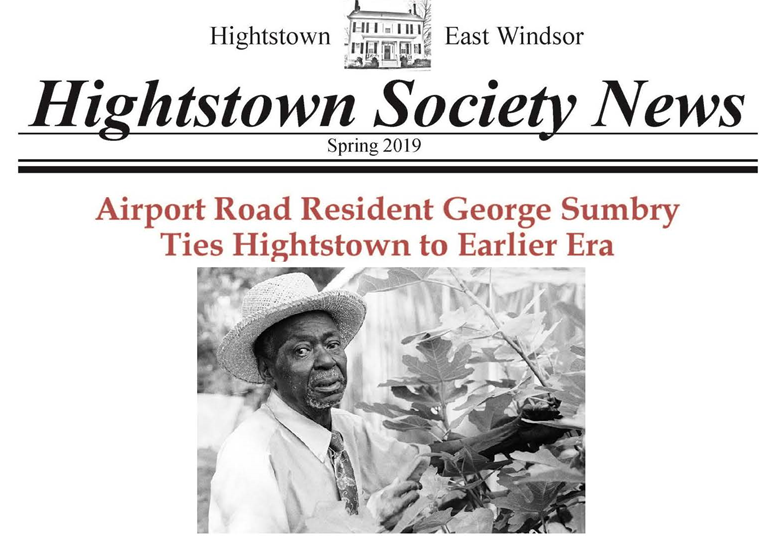
The West Airport Road Project will commemorate contributions to agriculture and commerce in the Hightstown-East Windsor area by the Sumbry family and others who worked and lived there. In his talk Mr. Charles (Cappy) Stults, president of the Hightstown-East Windsor Historical Society, outlined that history and describe plans to erect interpretive signs along the road where African Americans first lived, built churches, and established businesses.
The Trent House Association in partnership with the Hightstown-East Windsor Historical Society presented the talk on the West Airport Road Project both in-person at the Trent House Museum Visitor Center and virtually on Zoom.
African Ancestry: Trace Your DNA, Find Your Roots
Sunday, October 24, 2021 - 4:00 pm
Sunday, October 24, 2021 - 4:00 pm
|
In partnership with the Greater Trenton branch of the Association for the Study of African American Life and History (ASALH), the Trent House Association sponsored an information session on African Ancestry, a DNA test that can trace an individual's maternal family line by country and ethnic group for 2,000 years. This free information session was offered in-person and via Zoom.
|
The Chilocco History Project: A Century of Stories from a Federal Native American Boarding School
Saturday, October 23, 2021 - 4 pm
Saturday, October 23, 2021 - 4 pm
Chilocco Indian Agricultural School is located in north central Oklahoma and operated from 1884 -1980 as one of a handful of federal off-reservation Indian boarding schools in the United States. Thousands of students passed through the school's iconic entryway arch during its nearly century-long existence. Even today, Chilocco continues to be a powerful site for memory for its remaining alumni from over 127 tribes, Native peoples directly or indirectly impacted by its history, and scholars and students throughout the world who seek to understand its role within the larger context of U.S. Indian boarding schools.
|
Dr. Julie Pearson-Little Thunder, Dr. Lisa Lynn Brooks, and Sarah Milligan shared their experience working on the Chilocco History Project a three-year collaborative agreement between the Oklahoma Oral History Research Program (OOHRP) at Oklahoma State University in conjunction with the Chilocco National Alumni Association (CNAA), an organization made up of former students and staff of Chilocco Indian Agricultural School, which hosts annual reunion which has taken place since 1894.
|
The presenters discussed the development of the history project, which documented over 40 oral history interviews with living alumni and staff, shared thousands of images digitized from the CNAA archives, developed a documentary, and supported the development of K-12 curriculum to bring these archives into the classroom, which can be found online: https://chilocco.library.okstate.edu
Celebrating the 240th Anniversary of the March to Yorktown and the Encampment of Washington's and Rochambeau's Armies in Trenton
Saturday, August 28, 2021 - 10 am to 5 pm on-site
Saturday, August 28, 2021 - 10 am to 5 pm on-site
Just as it was in 1781, the Trent House grounds hosted American and French infantry and artillery soldiers. Re-enactors demonstrated how soldiers in the Continental Army under General Washington and America's French allies under General Rochambeau lived during the 680-mile march from New England to Yorktown, Virginia, and how they prepared for the decisive battle that ended the Revolutionary War.
It was at the end of August 1781 that the two armies first converged in Princeton. They then proceeded down the King’s Highway, now New Jersey Route 206, to encampment at Trenton, New Jersey before crossing the Delaware River. French cannons were parked on the estate known as Bloomsbury and owned by Assistant Quartermaster General of the Continental Army, Colonel John Cox. In the early 1700s this estate had been the home of William Trent, for whom Trenton is named. The final major battle of the Revolutionary War took place in October 1781 when the combined forces of the Continental Army and its French allies finally captured British General Cornwallis’ army at Yorktown in Virginia. This victory, after five years of warfare, ensured America’s independence.
It was at the end of August 1781 that the two armies first converged in Princeton. They then proceeded down the King’s Highway, now New Jersey Route 206, to encampment at Trenton, New Jersey before crossing the Delaware River. French cannons were parked on the estate known as Bloomsbury and owned by Assistant Quartermaster General of the Continental Army, Colonel John Cox. In the early 1700s this estate had been the home of William Trent, for whom Trenton is named. The final major battle of the Revolutionary War took place in October 1781 when the combined forces of the Continental Army and its French allies finally captured British General Cornwallis’ army at Yorktown in Virginia. This victory, after five years of warfare, ensured America’s independence.
Two re-enactor organizations – Le Regiment Bourbonnais and Le Regiment Saintonge – represented French infantry and artillery. Also participating were re-enactors of African American infantrymen of the 1st Rhode Island Regiment and John Lamb’s Artillery Company. Interpreters from the Old Barracks were also be on-site. The William Trent House Museum as a site on the Washington-Rochambeau Revolutionary Route National Heritage Trail was recognized with presentation of a sign by National Park Service Trail Administrator Johnny Carawan.
Remarks were given by Congresswoman Bonnie Watson Coleman, Mayor Reed Gusciora, Director of Trenton Parks, Recreation & Culture Maria Richardson, City Councilwoman Marge Caldwell-Wilson, and Mercer County Executive Brian Hughes. The Congresswoman and the Mayor are shown below with many of the re-enactors.
Remarks were given by Congresswoman Bonnie Watson Coleman, Mayor Reed Gusciora, Director of Trenton Parks, Recreation & Culture Maria Richardson, City Councilwoman Marge Caldwell-Wilson, and Mercer County Executive Brian Hughes. The Congresswoman and the Mayor are shown below with many of the re-enactors.
Co-sponsors of the event included the Trenton City Museum at Ellarslie, the Lawrence Historical Society, and the National Washington Rochambeau Revolutionary Route Association (W3R-US) and its local New Jersey chapter. The event was partially supported by the National Park Service and W3R-US.
Black August - Then and Now: Historical Origins and Current Relevance
Sunday, August 22, 2021 - 4:00 to 5:30 pm via Zoom
Sunday, August 22, 2021 - 4:00 to 5:30 pm via Zoom
|
After the widely televised death of George Floyd, the world was awakened to how wrong encounters with law enforcement can go. During the late sixties and early seventies, similar attention was brought to murderous encounters in the United States prison system. Names like Jonathan and George Jackson, Angela Davis, Attica, Soledad, Counterintelligence Program, and San Quentin Prison captured the attention of activists of the day, leading to a vibrant movement for prison condition reform. Out of that movement came the creation of “Black August.” The “Black August – Then and Now” panel discussion and poetry readings informed our audience about this movement of resistance to oppression and demand for prison/criminal justice reform. The program was jointly hosted by the Trent House Association (THA) and the Greater Trenton Branch of the Association for the Study of African American Life and History (ASALH).
Artwork by Ojure Lutalo, artist and former political prisoner. |
Panelists: Bonnie Kerness, Program Director of the American Friends Service Committee Prison Watch; Pastor Lukata Mjumbe, Witherspoon Street Presbyterian Church, Princeton, NJ. Poets: Nekiel Butler, Raul Cortes Jr. Opening and closing remarks: Gerald Truehart II, President of the Greater Trenton Branch of ASALH. Moderators: Christine Samson-Clark, Secretary of the Trent House Board of Trustees, and Deborah Roussell, Trustee.
Archaeology and Ancient Technology - Celebrating New Jersey's Indigenous People
Saturday, June 26, 2021 - 12 noon to 3 pm
Saturday, June 26, 2021 - 12 noon to 3 pm
|
Visitors met the archaeologists been working on the Museum’s grounds and viewed some of the artifacts left by native people thousands of years ago. Demonstrators exhibited how stone tools, pottery, and wampum were made and used by New Jersey’s first residents. Activities for children gave them hands-on experience in finding and identifying artifacts.
The 2021 archaeology project was supported by a grant from the New Jersey Historic Trust, a generous gift from NJM Insurance Group, and members and donors of the Trent House Association. Event partners included Hunter Research, a Trenton-based archaeology and cultural management firm, the New Jersey State Museum, the Tulpehaking Nature Center, and the Friends for the Abbott Marshlands, where the Center is located. |
Museum Re-opening & Presentation of 1677 Deed of Trenton's First English Colonist
Sunday, June 6, 2021 - 2 to 4 pm
Presentation of deed at 2:30 pm
Sunday, June 6, 2021 - 2 to 4 pm
Presentation of deed at 2:30 pm
|
The Trent House Association in partnership with the City of Trenton announced the re-opening of the 1719 William Trent House Museum with a special welcome-back program, free to all. Visitors were able to view new exhibits in the Museum, Visitor Center, and garden exploring the rich history of the many people whose lives were connected with this historic site. The Trenton Historical Society joined the Association in presenting a deed signed in 1677 by the first English resident of the area, Mahlon Stacy, that was recently purchased by the two organizations. The deed will remain on view at the Trent House through the summer before being donated to the Trenton Free Public Library for its Trentoniana Collection. |
A Taste of History with Chef Walter Staib
Sunday, May 16, 2021 - 2pm
Sunday, May 16, 2021 - 2pm
|
A third-generation restaurateur with over five decades of culinary experience, Chef Walter Staib is an author, Emmy Award winning TV host, James Beard-nominated chef and culinary historian. His career began in Europe, receiving formal training in many of Europe’s finest hotels and restaurants.
As founder of Concepts By Staib, Ltd., a global restaurant management and hospitality consulting firm, Walter Staib has opened more than 650 restaurants worldwide and was the driving force behind Philadelphia’s City Tavern for 26 years. Chef Staib is best known as host of A Taste of History, which has received Fifteen Emmy awards. Staib has also made appearances on national cooking shows, such as 60 Minutes, the Today show and the Food Network’s “Best Thing I Ever Ate” and “Iron Chef.” Chef Staib’s culinary excellence has earned him numerous other awards, including induction into the American Academy of Chef’s Culinary Hall of Fame by the American Culinary Federation. |
"We Are Still Here:" The History and Continuing Culture of New Jersey's Indigenous Tribal Communities
Saturday, April 17, 2021 - 1 pm
Saturday, April 17, 2021 - 1 pm
|
The land on which the Trent House was built is part of the traditional territory of the Lenni- Lenape, called “Lenapehoking.” The Lenni-Lenape People lived in harmony with one another upon this territory for thousands of years before European colonization. During the colonial era and early federal period, many were removed west and north, but some remained among the three continuing historical tribal communities of the region: The Nanticoke Lenni-Lenape Tribal Nation; the Ramapough Lenape Nation; and the Powhatan Renape Nation. The Trent House acknowledges the Lenni-Lenape as the original people of this land and their historic and continuing relationship with their territory.
Rev. Dr. J.R. Norwood, Jr. spoke on the Lenape, the original people who lived in what is now New Jersey, and their contributions to our state’s rich diversity. |
The Rev. Dr. J.R. Norwood, Jr., is an ordained Christian clergyman and founding pastor of the Ujima Village Christian Church of Ewing, New Jersey. A member of the Nanticoke Lenni-Lenape Tribal Nation, he served as an elected Tribal Councilman from 2004 to 2019, is currently the first Principal Justice of the Tribal Supreme Court of the Nation, and represents the Nanticoke Lenni-Lenape in the National Congress of American Indians, where he serves as co-chairman of the Task Force on Federal Acknowledgment.
Passing the Time with Major William Trent - Video Premiere and Talk
Saturday, March 13, 2021 - 1 pm
Saturday, March 13, 2021 - 1 pm
|
The younger William Trent was still a child when his father died suddenly on Christmas Day 1724. After a mercantile apprenticeship in Philadelphia, Trent followed in his father’s footsteps as a man of business, trading with Native Americans for furs. But unlike his father he was also a military man.
Jason Cherry developed the script and portrays Trent in the video, based on his extensive research on the Trent family. As a research consultant to the William Trent House, he also provided much of the information presented in the Museum’s recently released video, “Mary Coddington Trent Reflects – 1726,” about Trent's mother. Jason speaks frequently on the French and Indian War and is working on the complete biography of Major William Trent. |
"Open the Door, I'll Get It Myself:" The Great Migration to New Jersey
Saturday, February 27, 2021 - 1 pm
Saturday, February 27, 2021 - 1 pm
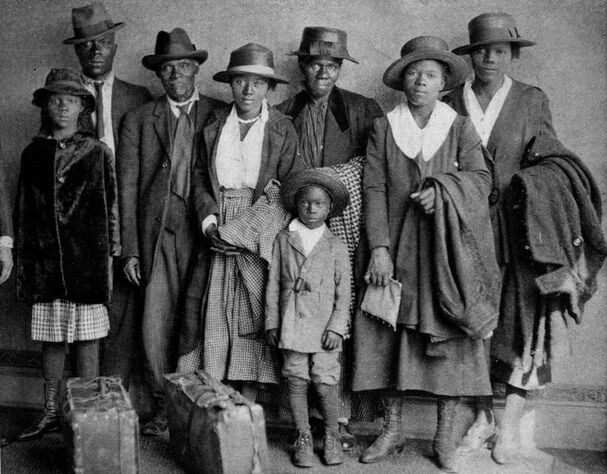
New Jersey's African American population multiplied during what is known as the Great Migration in the early decades of the 20th century. A leading history scholar and acclaimed speaker, Dr. Linda Caldwell Epps explored the factors leading African Americans to take on the challenges and risks of leaving communities and families in the South for an unknown, but hoped for, better future in the North. She shared stories of some of these migrants and discuss how their arrival changed life and culture in New Jersey's cities.
"In Graves of Their Own:" Reclaiming the Locust Hill Cemetery
Saturday, February 6, 2021 - 1 pm
Saturday, February 6, 2021 - 1 pm
|
Algernon Ward, a notable figure in Trenton’s history community and member of the 6th Regiment of the United States Colored Troops Civil War re-enactor organization, will highlight the history of the Locust Hill Cemetery from its beginnings in the 18th century as the earliest known burial place of African Americans in Trenton. He will outline current efforts to ensure the cemetery’s preservation and commemorate the people buried there, including several Civil War veterans.
Mr. Ward and the 6th Regiment are leading that project, which includes developing an interpretive center next to the cemetery. The Locust Hill Cemetery joins other sites important to Trenton’s African American history, including the 1856 Higbee School, the first free school for African Americans in Trenton, and the Carver Youth and Family Center, a social and cultural center for Trenton’s Black community. For a recording of this talk, go to our videos page. |
Immigration and Americanization - Eastern European Workers in Trenton's Roebling Factories
Saturday, January 23, 2021 - 1 pm
Saturday, January 23, 2021 - 1 pm
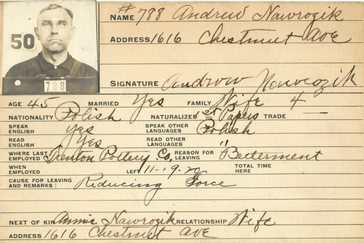
The Trent House Museum continues to expand its interpretation of Trenton's history. In this program, available via Zoom, records of Roebling Factory employees in the years immediately after World War I are used to explore the question, "Why were some workers who immigrated to the United States from Europe considered 'American' while others were not?"
Four boxes of employee records found in the Trentoniana Collection of the Trenton Public Library are a treasure trove of detailed information about nearly 900 men who worked in Rope Shop No. 2, Department 50, of the Roebling Wire Factory in Trenton in the early part of the 20th century. Samuel Stephens, trustee of the Trent House Association, and Matthew Xu, student intern from West Windsor - Plainsboro High School South, present the results of their examination of these records. They focus on factors that affected why some workers' employment records showed with a dual nationality combining their country of origin with "American," and others did not. They explore factors in the individual workers' lives as well as in the social and political dynamics of the time and ask us to consider what the experiences of these immigrants might tell us about immigration to the United States today.
Four boxes of employee records found in the Trentoniana Collection of the Trenton Public Library are a treasure trove of detailed information about nearly 900 men who worked in Rope Shop No. 2, Department 50, of the Roebling Wire Factory in Trenton in the early part of the 20th century. Samuel Stephens, trustee of the Trent House Association, and Matthew Xu, student intern from West Windsor - Plainsboro High School South, present the results of their examination of these records. They focus on factors that affected why some workers' employment records showed with a dual nationality combining their country of origin with "American," and others did not. They explore factors in the individual workers' lives as well as in the social and political dynamics of the time and ask us to consider what the experiences of these immigrants might tell us about immigration to the United States today.
Celebrating Hogmanay with Scottish Music
Saturday, December 26, 2020 - 1 pm
Saturday, December 26, 2020 - 1 pm
|
The Trent House Association presented The Practitioners of Musick in a performance honoring the Scottish heritage of William Trent , including music that George Washington and his family enjoyed. He was said to be especially fond of William Shield’s comic opera Rosina, which was performed in Philadelphia, the nation’s capital, during his Presidency. Some of the opera’s melodies drew on Scottish folk songs. John Burkhalter and Donovan Klotzbeacher founded the Practitioners of Musick to the research and performance of the musical riches of 18th century Great Britain and the Colonial and Federal periods in America. They have performed and lectured at libraries, museums, and historic sites throughout the region and beyond.
Following the concert, Marisa Benson read her original poem "Step into the New Year," written especially for the 2020 Hogmanay program. Click here to download and play her reading. |
Mary Coddington Trent Reflects - 1726
Video Premiere
Sunday, December 20, 2020 - 2 pm
Video Premiere
Sunday, December 20, 2020 - 2 pm
|
The video can be viewed by clicking here.
|
Re-enacted by the American Historical Theater, the Trent House's newest video project portrays what we know about the life of William Trent's second wife and her experiences after his sudden death on Christmas Day 1724. Dressed in a new gown in the latest fashion, Mary Trent recounts her early life and events from her marriage to Mr. Trent. Set in 1726, she is awaiting the outcome of her lawsuit against her eldest step-son James that will determine her financial standing and security.
|
|
The Art of the Historical Poster: The Washington-Rochambeau Route through Mercer County to Victory at Yorktown, 1781 - An Illustrated Virtual Talk
David Bosted November 14, 2020 The Trent House played a significant part in the movement of the French and Continental Armies to trap General Cornwallis and his British-Hessian army at Yorktown, Virginia in 1781. What is the best way to tell this epic story about how the French & American Armies accomplished a 580-mile march to Yorktown, with Mercer County being the critical halfway point? Spoiler Alert: Historical Poster(s)! Urbanologist David Bosted, a Trustee at the Trenton City Museum, explained how the long march was accomplished, the role of Trenton and the Trent House, and why historical posters are the best way to tell the story. |
Digging Up Trenton's History Before Stacy and Trent - An Illustrated Virtual Talk
Richard Adamczyk
October 10, 2020
Richard Adamcyzk, archaeologist with historic preservation firm of Richard Grubb & Associates and Second Vice President of the Archaeological Society of New Jersey, reviewed the field of prehistoic archaeology in New Jersey, showed Native American artifacts found recently on the Trent House property, and explained how the property fits into the greater complex of ancient Trenton sites.
Richard Adamczyk
October 10, 2020
Richard Adamcyzk, archaeologist with historic preservation firm of Richard Grubb & Associates and Second Vice President of the Archaeological Society of New Jersey, reviewed the field of prehistoic archaeology in New Jersey, showed Native American artifacts found recently on the Trent House property, and explained how the property fits into the greater complex of ancient Trenton sites.
Public Archaeology Day
Hunter Research
July 9, 2020
Staff from Hunter Research, a Trenton-based cultural resources service firm, collected soil samples across the Museum grounds. The samples will be analyzed to learn more about where on the property are especially important sites for future excavation. Visitors were given an orientation to prior excavations with examples of artifacts and observed the sampling process and initial on-site analysis.
Hunter Research
July 9, 2020
Staff from Hunter Research, a Trenton-based cultural resources service firm, collected soil samples across the Museum grounds. The samples will be analyzed to learn more about where on the property are especially important sites for future excavation. Visitors were given an orientation to prior excavations with examples of artifacts and observed the sampling process and initial on-site analysis.
|
Remember the Ladies – The Critical Role of African American Men and Women in Women’s Suffrage
Lecture by author Angela Dodson March 14, 2020 Opening our exhibit of Rightfully Hers on the 100th anniversary of women’s right to vote in the United States, local author Angela Dodson spoke about the role of African American men and women in the movement for universal suffrage. Copies of her book, Remember the Ladies: Celebrating Those Who Fought for Freedom at the Ballot Box, were available for sale and signing. |
|
African American History In Quilts
A talk by members of the Princeton Sankofa Stitchers Modern Quilt Guild In conjunction with If These Quilts Could Talk on display at the Trenton City Museum at Ellarslie February 29, 2020 Mada Coles Galloway, Juandamarie Gikandi, and Gail Mitchell, members of the Princeton Sankofa Stitchers Modern Quilt Guild, spoke about the art and craft of quilting, the history of the Guild and their personal background in quilting, and inspiration for their work in the African American experience. |
|
Needham Roberts – Trenton’s Own War Hero
Lecture by Algernon Ward January 19, 2020 Born and raised in Trenton, Needham Roberts was 17 when he enlisted in the Harlem Hellfighters. He and his fellow Hellfighter William Johnson were awarded the Croix de Guerre and the Purple Heart for their actions fighting off a German patrol in France in 1918. Regardless of these achievements, they and their fellow African American soldiers returned to the United States to face discrimination and prejudice. Trenton resident Algernon Ward, well known for his many roles as African American soldiers from the Revolutionary War through the World Wars, presented a fascinating portrait of Roberts in the context of race relations in America during the Jim Crow era. His illustrated talk was accompanied by a display of Army uniforms and military equipment of the time. |
|
Hogmanay
December 28, 2019 More than 100 guests enjoyed a varied program honoring William Trent’s Scottish heritage in Hogmanay, the traditional celebration in Scotland of the New Year. The program included bagpipers from the Greater Trenton Pipes and Drums, 18th century Scottish songs performed by Liberty Tree (Stacy Roth and Bob Dupre), and Trenton Councilwoman Marge Caldwell-Wilson reminisced about Hogmanay in her childhood home of Scotland. |
|
Caledonia – A Scots Musical Entertainment
December 7, 2019 The Trent House Association presented The Practitioners of Musick – John Burkhalter III and Donovan Klotzbeacher - in a performance honoring the Scottish heritage of William Trent and celebrating the 300th anniversary of the house he built at the Falls of the Delaware in 1719. The program, “Caledonia,” included music for recorder and harpsichord composed by Bremner, Oswald, and Ramsey, among other Scottish masters, and was performed in the historic house. |
|
Preserving Trenton’s African American History – The Higbee School
Presented by Lisa Michelle Toro November 8, 2019 Trenton, like other northern communities, did not allow African American children to attend school with their white counterparts and instead built separate schools. The Higbee Street School was built in 1857 as a school for African American children in the city and was soon joined in the neighborhood by other segregated schools. The Trent House Association has joined with other groups and individuals in Trenton seeking to recognize the history of racial injustice and the struggle for equal rights that continues today by restoring the Higbee Street School. Once restored, the School can serve our community as a center for learning and commemoration. |
|
History and Preservation of The William Trent House
Lecture by Kevin Joy October 19, 2019 The 1719 home of Trenton’s namesake, William Trent, was the topic of this program in association with The Princeton Preservation Group. The William Trent House, now a museum, is significant historically and architecturally. In the course of its 300-year existence, it has seen many structural changes, in spite of which it remains remarkably intact. In this lecture, Kevin Joy – Trent House Association trustee and historic preservation specialist - presented a brief history of the house, an overview of its architecture, and examined in detail structural changes over the years. He also discussed recent rehabilitations and the conservation and preservation challenges faced in maintaining an antique house museum. |
|
History Never Tasted So Good - Colonial Style Dinner October 12, 2019 A colonial style dinner was held at Trinity Cathedral for friends and supporters of the Trent House Association in celebration of the 300th anniversary year of the construction of the William Trent House. See here for our 300th Anniversary program book. |
|
The World of Captain William Trent
Lecture by Jason Cherry July 21, 2019 Author Jason Cherry shared the results of his extensive research into the life of William Trent’s youngest son as he lead a band of men to defend the English control of the Forks of the Ohio River- the frontier in the struggle between the French and the English for the heart of the continent. Colonial Encampment and Old Fashioned Ice Cream Social July 20, 2019 The Trent House Museum’s annual Ice Cream Social for 2019 was enhanced by the presence of Pittsburgh-based Captain William Trent’s Company of re-enactors of the French and Indian War militia led by Trent’s youngest son William. |
|
Celebrating 300 Years of the William Trent House
Hosted by the Philadelphia Chapter of the Institute for Classical Architecture and Art and The Trent House Association June 1, 2019 Participants enjoyed fine food and drink on the grounds of the Trent House Museum as well as guided tours of the House and its recent restoration. The event was held in honor of the Museum’s 2019 Grand Jury Award for historic preservation from the Preservation Alliance of Greater Philadelphia. See here for our 300th Anniversary program book. |
|
Mahlon Stacy : Colonial Pioneer at the Falls of The Delaware
Lecture by Shawn Carney May 18, 2019 This illustrated lecture explored what is known about Mahlon Stacy, the first European settlers in what is now Trenton. Shawn Carney, Trent House docent and researcher, discussed the situation in England that led Quakers like Stacy to immigrate to the American colonies and the experiences of the Stacy family on their plantation at the Falls of the Delaware, much of which was later purchased by William Trent. For more information about this painting and how you can help the Trent House preserve it, click here! |
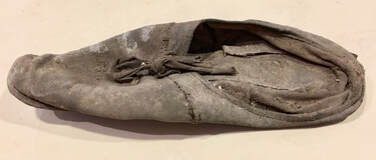
The Mystery of the Shoe in the Roof: Panel Discussion
April 7, 2019
Experts on concealed objects, Early American shoes, and the architecture of the Trent House gathered to explore why, when, and how a shoe was hidden in the House roof. Chris Manning explained the tradition of concealing objects such as old shoes in the roof or walls of buildings as a way to ward off evil spirits – a tradition that began in the Middle Ages in Europe and found its way to America through its immigrants. Valentine Povinelli, master shoemaker at Colonial Williamsburg, described his analysis of the shoe and his conclusion that it was likely a woman’s shoe from 1830-1850. Kevin Joy, Trent House Association trustee and historic preservation expert, documented changes to the Trent House roof over its 300-year history, specifically noting changes during the early-mid 1800s that provided the opportunity for workers to place the shoe there.
April 7, 2019
Experts on concealed objects, Early American shoes, and the architecture of the Trent House gathered to explore why, when, and how a shoe was hidden in the House roof. Chris Manning explained the tradition of concealing objects such as old shoes in the roof or walls of buildings as a way to ward off evil spirits – a tradition that began in the Middle Ages in Europe and found its way to America through its immigrants. Valentine Povinelli, master shoemaker at Colonial Williamsburg, described his analysis of the shoe and his conclusion that it was likely a woman’s shoe from 1830-1850. Kevin Joy, Trent House Association trustee and historic preservation expert, documented changes to the Trent House roof over its 300-year history, specifically noting changes during the early-mid 1800s that provided the opportunity for workers to place the shoe there.
|
If These Stones Could Talk: Reading and Presentation
Beverly Mills and Elaine Buck March 30, 2019 Cemeteries have stories to tell, voices to unearth–and lessons from the past that we can draw upon to better shape the future. If These Stones Could Talk documents, through dozens of oral histories, collected lives of a minority Black community in a predominantly White region and brings fresh light to a forgotten corner of American history in a small cemetery in central New Jersey. In their book talk, Elaine Buck and Beverly Mills shared excerpts and images from the book. |
|
Bishop Richard Allen’s Hymnal: Lecture & Concert
February 17, 2019 Jason Allen, former director of the museum at Mother Bethel AME Church, presented an illustrated lecture on AME church founder, Bishop Richard Allen, including his lifelong efforts as abolitionist and patriot that place him among our nation’s founding fathers. Philadelphia’s Craft Works Music group performed music from Bishop Allen’s hymnal, which used shape notes to encourage congregational singing. |
|
The Unfortunate History of Slavery and the Quakers in New Jersey
Lecture by Richard Geffken February 9, 2019 Richard Geffken, an archival historian with the Shrewsbury Historical Society and the Monmouth County Historical Association, presented an overview of the history and legacy of New Jersey’s two-hundred-year embrace of human bondage. |


